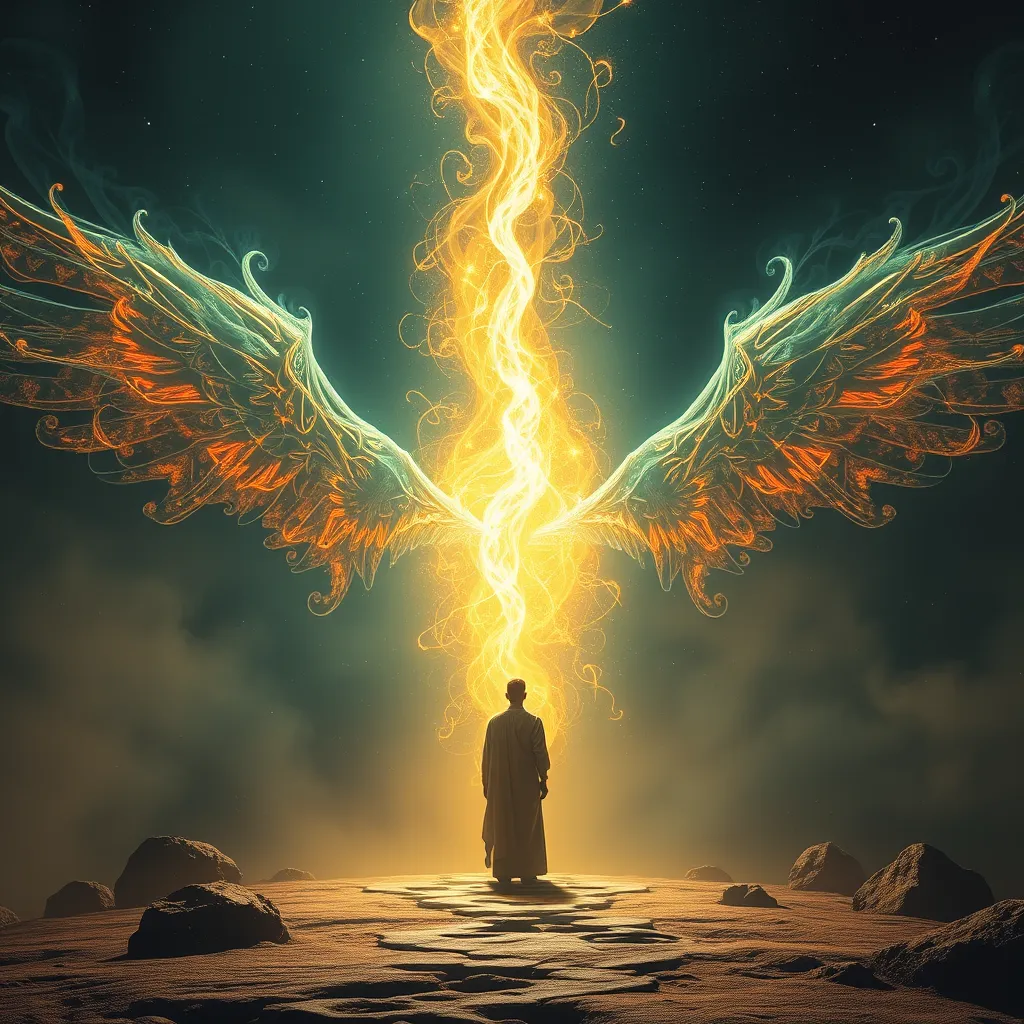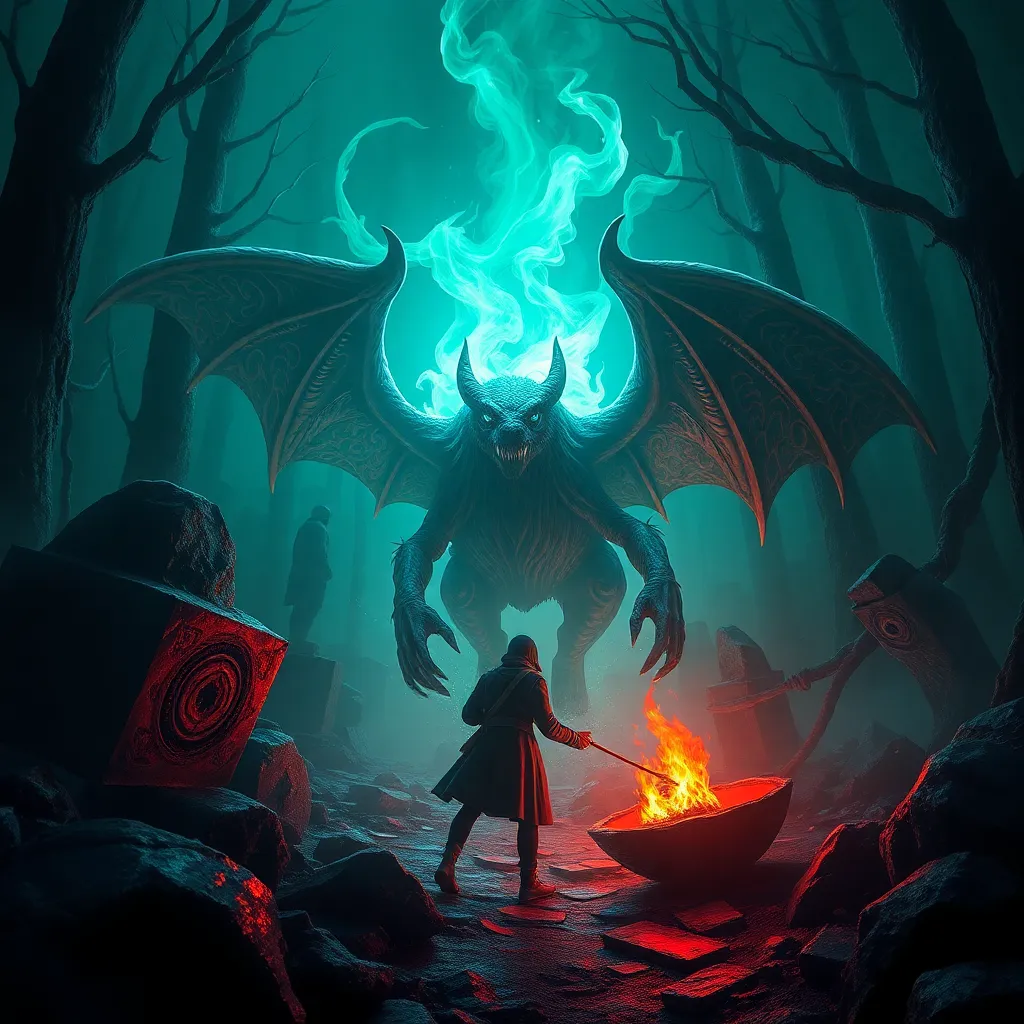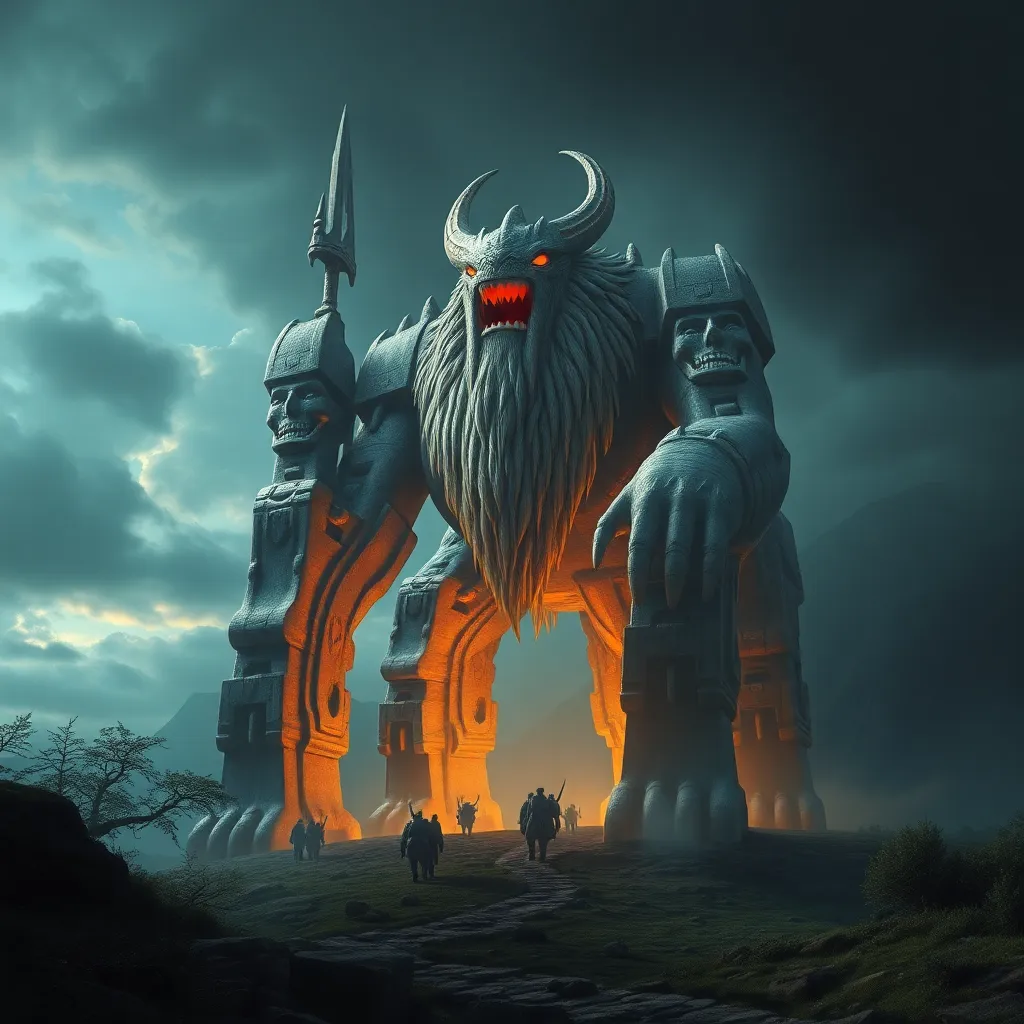Jinn and the Power of the Unseen: Exploring the Enigma of the Invisible World
I. Introduction
The concept of Jinn, often referred to as spirits or supernatural beings, holds a significant place in various cultures around the world. These entities are not merely figments of imagination; they represent a complex belief system that intertwines with the notions of the unseen world. In many traditions, Jinn are viewed as powerful beings that exist alongside humanity but are not always visible to the naked eye.
This article aims to delve into the enigma surrounding Jinn, exploring their historical context, characteristics, roles in religion and spirituality, and their portrayal in popular culture. Furthermore, we will examine the psychological and scientific perspectives on the unseen, shedding light on why the fascination with these entities persists in contemporary society.
II. Historical Context of Jinn in Mythology
A. Origins of Jinn in Pre-Islamic Arabian Culture
The origins of Jinn can be traced back to pre-Islamic Arabian culture, where they were believed to inhabit desolate places such as deserts and ruins. They were often associated with natural phenomena, and tribes would invoke them for protection or guidance. The Jinn were seen as both benevolent and malevolent, capable of both good and evil deeds.
B. Evolution of Jinn in Islamic Theology
With the advent of Islam, the understanding of Jinn evolved significantly. The Quran describes Jinn as beings created from smokeless fire, distinct from humans and angels. They possess free will, allowing them to choose between good and evil. Notably, the Quran emphasizes that Jinn, like humans, will be judged on the Day of Judgment based on their deeds.
C. Jinn in Other Cultural Mythologies Around the World
While Jinn are most commonly associated with Arabian mythology, similar entities can be found in various cultures worldwide:
- Genies: In Western culture, the concept of the genie, often depicted as a wish-granting spirit, draws heavily from the Jinn mythology.
- Yōkai: In Japanese folklore, Yōkai are supernatural creatures that encompass a broad range of beings, some of which share similarities with the characteristics of Jinn.
- Fairies: In European traditions, fairies or fae often exhibit traits akin to Jinn, particularly in their capricious nature and interactions with humans.
III. Characteristics and Types of Jinn
A. Physical and Metaphysical Attributes of Jinn
Jinn are believed to possess both physical and metaphysical attributes. They can shape-shift, taking on various forms, including that of animals or humans. This ability to transform often adds to their mystique and the fear they invoke. Metaphysically, Jinn are considered to have access to knowledge beyond human understanding, making them formidable entities in the spiritual realm.
B. Different Categories of Jinn
Jinn can be categorized into several distinct types:
- Marid: Known for their strength and rebellious nature, Marids are often depicted as powerful and difficult to control.
- Ifrit: These Jinn are typically associated with fire and are often portrayed as malevolent beings.
- Qareen: Believed to be a personal companion for every human, Qareens can influence thoughts and actions.
C. Jinn vs. Other Supernatural Beings
While Jinn share similarities with other supernatural beings, they are distinct in their characteristics:
- Angels: Often viewed as messengers of God, angels are considered pure beings without free will, unlike Jinn.
- Demons: In many traditions, demons are often portrayed as malevolent spirits, while Jinn can be both good and evil.
IV. The Role of Jinn in Religion and Spirituality
A. Jinn in the Quran and Hadith
The Quran contains several references to Jinn, detailing their creation, nature, and interactions with humans. The Hadith further elaborates on their characteristics and the appropriate ways to engage with them, underscoring the importance of seeking refuge from malevolent Jinn.
B. Beliefs and Practices Surrounding Jinn in Various Faiths
Beliefs about Jinn vary widely among different cultures and religions:
- Islam: Jinn are an integral part of Islamic belief, with specific rituals to protect against them.
- Hinduism: Similar beings exist in Hindu mythology, known as ‘Rakshasas,’ who possess both protective and harmful qualities.
- Christianity: While not directly mentioned, the concept of demons in Christianity echoes some attributes of Jinn.
C. The Intersection of Jinn with Spirituality and Mysticism
Jinn play a significant role in various mystical traditions. They are often invoked in rituals aimed at gaining knowledge, protection, or even power. The interaction between humans and Jinn can lead to profound spiritual experiences, both enlightening and terrifying.
V. The Power of the Unseen: Jinn and Human Interaction
A. Historical Accounts of Encounters with Jinn
Throughout history, there have been numerous accounts of individuals claiming to have encountered Jinn. These stories often reflect the cultural context of the time, showcasing the diverse perceptions of Jinn across different societies.
B. Cultural Practices for Invoking or Warding Off Jinn
Many cultures have developed specific practices and rituals to invoke or protect against Jinn, such as:
- Reciting verses from the Quran
- Using protective amulets
- Performing specific prayers or rituals
C. The Psychological Impact of Belief in Jinn on Individuals and Communities
The belief in Jinn can have profound psychological effects on individuals and communities. It can influence behavior, societal norms, and even mental health. The fear or reverence of Jinn often leads to community practices aimed at appeasing or warding off these entities.
VI. Jinn in Popular Culture
A. Representation of Jinn in Literature, Film, and Art
Jinn have made their mark in popular culture, appearing in various forms of literature, film, and art. From the classic tales of “One Thousand and One Nights” to modern adaptations in films like “Aladdin,” Jinn continue to captivate audiences.
B. Modern Interpretations and Adaptations of Jinn Mythology
Contemporary interpretations often blend traditional elements with modern storytelling, leading to diverse portrayals of Jinn that range from whimsical to terrifying.
C. The Impact of Popular Culture on the Perception of Jinn
Popular culture has significantly influenced public perception of Jinn, often simplifying or sensationalizing their characteristics. This has led to a complex relationship between traditional beliefs and modern representations.
VII. Scientific Perspectives on the Unseen
A. Psychological Explanations for Jinn-Related Experiences
Many encounters with Jinn can be explained through psychological phenomena. Sleep paralysis, hallucinations, and cultural conditioning often play a role in shaping these experiences, suggesting that belief in Jinn can profoundly influence perception and reality.
B. The Role of Folklore and Superstition in Understanding the Unseen
Folklore and superstition provide context for the belief in Jinn, serving as a means of explaining the unknown. These narratives often reflect societal fears and values, making them an essential part of cultural identity.
C. Bridging the Gap Between Science and Spiritual Beliefs
While science seeks to understand the physical world, spiritual beliefs offer insights into human experience. Bridging the two can provide a more comprehensive understanding of phenomena associated with Jinn and the unseen world.
VIII. Conclusion
The significance of Jinn and the unseen world is deeply rooted in human culture and spirituality. As we have explored, Jinn represent more than mere folklore; they embody our fears, aspirations, and the mysteries that lie beyond our understanding. The enduring fascination with Jinn in contemporary society highlights our innate desire to explore the unknown.</



